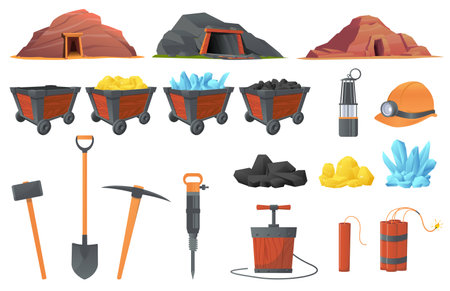Introduction: The Rise of Train Hikes in the UK
In recent years, a remarkable trend has emerged across Britain: outdoor enthusiasts are increasingly pairing their trekking adventures with journeys by train. This movement, known as “train hikes,” captures the imagination of walkers who wish to explore the UK’s stunning landscapes without relying on cars. From the rolling fells of the Lake District to the windswept moors of Yorkshire and the coastal paths of Cornwall, more and more hikers are discovering how public transport opens up new possibilities for linear walks, circular routes, and multi-day treks. Train hikes offer not only environmental benefits—by reducing carbon footprints—but also provide flexibility and spontaneity that traditional out-and-back walks often lack. With an ever-expanding network of rail connections, it’s now easier than ever to step off the train and straight onto a footpath, trekking poles in hand, ready to discover Britain’s most scenic routes. As this approach grows in popularity, understanding how to best pair your trekking poles with public transport journeys is becoming an essential skill for modern British ramblers.
Choosing the Right Trekking Poles for British Terrain
When planning to pair your trekking poles with UK public transport journeys and train hikes, it’s essential to select poles that are well-suited to the diverse British landscapes. The UK offers a patchwork of walking environments, from misty fells in the Lake District to rugged coastal paths in Cornwall. Your choice of walking poles can greatly influence comfort and performance during your adventure. Below is a quick guide to help you match your poles to typical UK terrains:
| Landscape | Recommended Pole Features | Key Considerations |
|---|---|---|
| Moorland & Fells | Adjustable length, lightweight aluminium or carbon fibre, ergonomic cork grips | Look for shock absorption for uneven ground; collapsible for bus or train storage |
| Woodland & Forest Trails | Mid-weight, non-slip rubber tips, moderate shock absorption | Poles should be sturdy but not overly heavy; easy to clean after muddy walks |
| Coastal Paths | Corrosion-resistant materials, secure locking mechanism, extended foam grip | Salt air can cause corrosion; consider wrist straps for steep ascents/descents |
| Urban & Park Walks | Compact folding design, lightweight, rubber feet covers | Discreet and easy to stow on public transport; minimal noise on pavements |
Before setting off, always check that your trekking poles are permitted on your chosen public transport route. Most UK train services allow collapsible poles if stowed safely. For multi-day trips or mixed routes, opt for telescopic or folding designs which pack down easily and fit into a rucksack or luggage rack. Ultimately, choosing the right pole is about balancing practicality with the specific demands of each walk—making your journey smoother from platform to path.

3. Navigating Train and Public Transport Etiquette with Trekking Gear
Travelling across the UK with trekking poles in tow requires not only practical planning, but also a respectful understanding of British public transport etiquette. Whether youre boarding a train to the Lake District or hopping on a London Underground service en route to a trailhead, how you handle your trekking gear can make all the difference in ensuring a smooth journey for yourself and your fellow passengers.
Handling and Packing Your Trekking Poles
First and foremost, always collapse your trekking poles before entering any station or stepping onto public transport. Most modern poles are telescopic or foldable, and they should be secured with their tips covered—rubber caps are highly recommended, both for safety and courtesy. A simple strap or mesh side pocket on your rucksack is ideal for keeping them tucked away without protruding dangerously into aisles or personal space.
Storing Poles on Trains and Buses
On trains, use the overhead luggage racks where possible, or place your rucksack (with poles stowed) under your seat. Avoid blocking aisles, doorways, or priority seating areas. On buses, keep your pack close to you, especially during busy periods; never rest long items across seats meant for others. If standing, be mindful not to accidentally poke or trip other passengers—Brits value orderly queues and clear passageways!
Etiquette on the Underground and Local Services
The London Underground and regional light rail systems can become very crowded, particularly during rush hours. Here, compactness is key: ensure your poles are fully collapsed and securely stowed before entering ticket barriers. Maintain awareness of your footprint—stand as close to your pack as possible, and avoid swinging it around when boarding or alighting. If you’re carrying muddy gear after a walk, wipe down your poles beforehand to avoid leaving marks on seats or floors. Finally, if you need assistance—such as with larger packs or finding storage space—politely ask staff; clear communication and a friendly “excuse me” go a long way in the UK.
By following these simple yet essential guidelines, you’ll blend seamlessly into Britain’s well-ordered transport system while keeping your kit—and fellow travellers—safe and comfortable en route to your next adventure.
4. Planning Point-to-Point Hikes via Rail
One of the real joys of walking in the UK is the sheer convenience afforded by the national rail and bus networks, which opens up a world of linear—or point-to-point—walks. Unlike circular routes that bring you back to where you started, point-to-point hikes allow you to explore further afield, starting at one station or stop and finishing at another. Here’s how you can efficiently plan such journeys while making the best use of your trekking poles along the way.
Why Choose Point-to-Point Hikes?
Point-to-point walks offer greater flexibility and adventure, letting you traverse new ground rather than retracing steps. With so many scenic train lines—such as the Settle–Carlisle or the North Wales Coast Line—and frequent local bus services, many trailheads and rural villages are accessible without a car.
Essential Mapping Tips
- Use Online Journey Planners: National Rail Enquiries, Traveline, and Google Maps can help you identify stations near your intended path and check live timetables.
- Plan for Connections: Some remote walks may require combining train and bus travel. Always double-check onward connections, especially for rural routes where services may be infrequent.
- Download Offline Maps: Mobile signal can be patchy on moors or in valleys. Download OS Maps or GPX files onto your device before setting off.
- Mind Last Train/Bus Times: Build in buffer time to avoid missing your return connection—especially in winter when daylight is short.
- Trekking Poles & Boarding: Most UK trains and buses have space for collapsible trekking poles; fold them away when boarding to keep aisles clear.
Sample Walk Planning Table
| Start Station/Stop | End Station/Stop | Distance (Miles) | Train/Buses Needed | Estimated Duration |
|---|---|---|---|---|
| Edale | Hope (Derbyshire) | 8 | Direct train between both stations on Hope Valley Line | 4-5 hours walking + 10 min train ride |
| Llanberis (bus from Bangor) | Beddgelert (bus to Porthmadog) | 9 | X19 bus to start/end; trains at Bangor/Porthmadog | 5 hours walking + 30 min buses/trains combined |
| Kentmere | Windermere | 11 | No station at Kentmere; use local bus to Staveley station then Windermere line | 6 hours walking + 40 min bus/train total |
| Salisbury | Tisbury | 13 | Both on South Western Railway mainline; direct trains available hourly | 6-7 hours walking + 15 min train ride |
Trekking Pole Pro Tip:
Packing your poles away on public transport not only keeps things tidy but also helps you blend in with local commuters, reducing the risk of misplaced kit as you move between urban and rural environments. When planning, look for routes with gentle descents or rougher terrain, where poles will really shine and make your journey more enjoyable.
If you’re mapping out a walk using Ordnance Survey maps or an app, plot both start and finish points by their nearest transport link. This allows for spontaneous changes if weather turns or legs tire—a luxury unique to Britain’s interconnected network.
5. Trekking Pole Tips: Before, During, and After the Journey
Essential Checks Before You Set Off
Before catching your train to the countryside or stepping onto a bus bound for the hills, give your trekking poles a once-over. Inspect all locking mechanisms—be they twist-lock or flick-lock—for firmness. Check for any cracks, especially around the joints and handles, as these can quickly worsen on uneven British terrain. Extend each section fully to ensure there are no snags or dents, and adjust the height so it’s ready for both steep ascents and level rambles. Don’t forget to stow any included rubber tips or baskets that might be needed for muddy paths or rocky scrambles common in UK landscapes.
On the Move: Keeping Your Poles Functional
During your journey, whether you’re changing trains at a busy station or navigating a narrow bridleway, keep your poles compact when not in use. Most modern poles collapse down small enough to fit inside or strap onto a rucksack. If you’re travelling on public transport, stash them securely to avoid obstructing aisles—a common courtesy on UK trains and buses. If weather turns typical (think: rain), take a moment at shelter points to wipe down the grips and shafts; this prevents mud build-up and keeps them comfortable to handle throughout your hike.
After the Hike: Quick Maintenance Matters
Once your boots are off and you’re back home or at your accommodation, don’t neglect post-walk pole care. Wipe down each section with a damp cloth to remove grit and salt—especially important after coastal walks where corrosion can set in quickly. Allow all sections to dry fully before collapsing them for storage, as moisture trapped inside can lead to stiffness or even mould growth. Apply a little silicone spray to locking mechanisms if they feel sticky; this simple step prolongs their life and reliability for your next UK adventure.
Compact Packing Methods for Trains and Buses
The key to hassle-free travel is keeping kit tidy. Many UK walkers use stuff sacks or velcro straps to bundle collapsed poles together—this stops them rattling about on luggage racks. Consider carrying an old tea towel or microfibre cloth in your daypack; it’s perfect for quick cleans before boarding and avoids bringing half the Peak District onto public seats. Remember, some train operators may ask you to store poles with larger luggage during busy times, so plan accordingly.
Final Thought: Respect Kit, Respect Others
Well-maintained trekking poles aren’t just about personal comfort—they help you tread lightly across Britain’s varied landscapes without leaving a trace (or creating unnecessary fuss on public transport). By giving your gear regular checks and care before, during, and after every journey, you’ll always be ready for spontaneous hikes from station platforms straight into wild country.
6. Favourite British Train Hike Routes and Local Insider Advice
If you’re ready to marry your trekking poles with the UK’s legendary rail network, here’s a shortlist of beloved and emerging train-to-trail routes—plus some local wisdom for making the most of your journey.
Classic Rail-Accessible Hiking Routes
Settle-Carlisle Line: Yorkshire Dales & Cumbria
This iconic line delivers hikers directly into the heart of wild landscapes. Alight at Ribblehead for the famous Three Peaks walk or try the lesser-trodden Dent station (the highest mainline station in England) to explore remote moorland. Locals recommend chatting with fellow ramblers on the train; it’s an unspoken tradition to swap trail tips over a flask of tea.
Edale to Hope: The Peak District
The Manchester-Sheffield line offers direct access to Edale, gateway to Kinder Scout and the Pennine Way. A popular route is hiking from Edale over Kinder Scout and descending to Hope or Bamford for your return train. Be prepared: muddy boots are a badge of honour, but do bring something to wipe them before boarding—locals appreciate it.
Dartmoor by Rail: Exeter to Okehampton
The newly reopened Dartmoor Line is a revelation. Step off at Okehampton and you’re on the doorstep of rugged moorland walks. The local advice is to check train times carefully—services aren’t as frequent as in cities, so plan your hike accordingly and always have a backup plan if the weather turns typically British.
Up-and-Coming Favourites
Snowdonia via Betws-y-Coed
The Conwy Valley Line brings walkers into North Wales’ lush forests and mountain foothills. Use Betws-y-Coed as your launchpad for trails up into Snowdonia, or for gentler riverside rambles. In-the-know hikers recommend stopping by a local bakery for Welsh cakes before setting off—it’s practically a rite of passage.
South Downs Way from Lewes
Catching the train to Lewes (from London Victoria or Brighton) puts you within easy reach of chalky ridges and panoramic views on the South Downs Way. Locals suggest starting early on weekends to avoid crowds, and don’t be shy about popping into a country pub mid-hike—the Sunday roast is worth it.
Local Customs & Practical Tips
Poles Etiquette on Trains
Keep trekking poles collapsed and stowed during your journey; it’s considered courteous and saves space in busy carriages. If you’re muddy post-hike, bag your boots or use plastic covers out of respect for fellow travellers.
Trail Chat & Community
Don’t hesitate to strike up conversation with other hikers—Brits may seem reserved, but there’s a quiet pride in sharing favourite walking spots. And if someone points out a “cracking view” or suggests a detour, take note: this kind of insider knowledge is gold.
Pairing your trekking poles with Britain’s public transport isn’t just about convenience—it’s about joining a vibrant community of walkers who know that the best journeys begin and end with a train ride through spectacular countryside.


